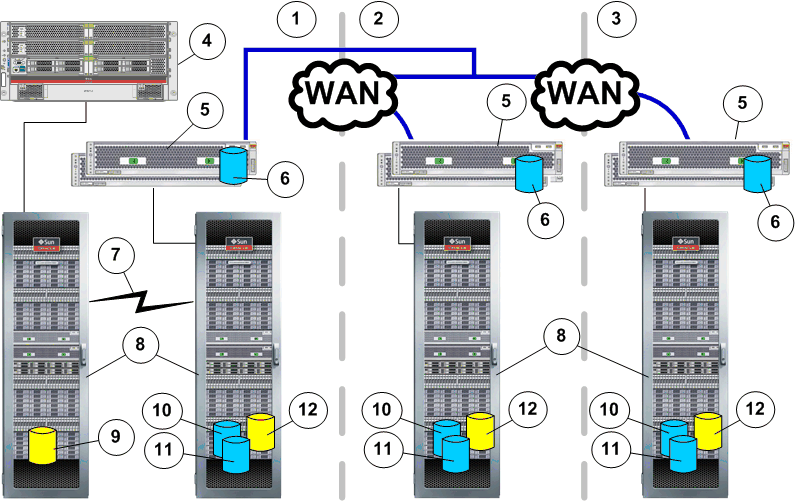One‑to‑many replication provides the capability to replicate data from a single source Oracle FS System to multiple target Oracle FS Systems. The one‑to‑many configuration protects your data in more than one remote facility.
One‑to‑many replicates data from the source LUN at the primary site to multiple targets at multiple locations.
Multi-hop replicates data from the source LUN to one target LUN. Then, this secondary target LUN is replicated to a third LUN.
For example, a one‑to‑many replication configuration may consist of primary and secondary sites connected by the same extended SAN fabric that uses dense wavelength division multiplexing (DWDM), and another remote site connected to the primary through a WAN.
The SAN fabric connection permits remote synchronous replication while the WAN connection permits remote asynchronous replication to the target Oracle FS Systems. Refer to the Oracle MaxRep for SAN release notes for the recommended limits for remote asynchronous configurations.
Another example of an one-to-many replication includes adding a secondary, or passive, Replication Engine to support the existing Replication Engine and to provide a high availability configuration. The primary Replication Engine and the secondary Replication Engine form an active‑passive cluster. The first Replication Engine in each clustered pair is in active mode. The second Replication Engine in each clustered pair is in passive mode, ready to take over if the active Replication Engine should fail.
A full high availability configuration consists of a cluster of two Replication Engines and the primary Oracle FS System on the primary site. The secondary site contains a cluster of two Replication Engines and the secondary Oracle FS System. High availability is not required at both sites. You can configure any Replication Engine as high availability by adding another Replication Engine.
